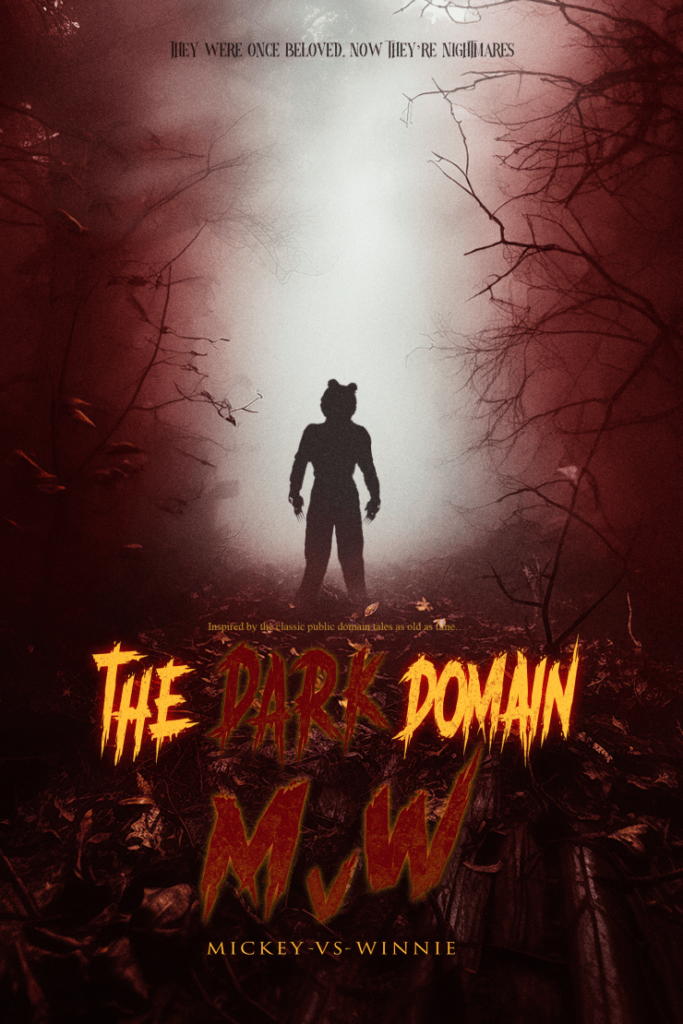The legendary Xenomorph crash lands on Earth and the small screen for the first time in FX’s highly anticipated new Alien TV show “Alien: Earth,” from creator and showrunner Noah Hawley (“Fargo,” “Legion”).
“Alien: Earth“ is set roughly 70 years in the future – yet two years before Ridley Scott’s Alien – in 2120, when “five corporations – Prodigy, Weyland-Yutani, Lynch, Dynamic, and Threshold – wield the power of nations, and proprietary advancements in technology provide the promise of a new tomorrow.“
Earlier this year, Bloody Disgusting was invited to 26 Keys, Hawley’s production banner, to preview the first fifteen minutes of the “Alien: Earth“ premiere and pick the showrunner’s brain on what to expect from the inaugural season.
“This show, for me, came out of a conversation that I had a few years ago now with John Landgraf about the Alien franchise,“ Hawley said ahead of the footage reveal. “It’s one of those seminal movies for me from my youth. It’s always an honor to be entrusted with the visions of other filmmakers as I was with Fargo, and I don’t take it for granted at all that they’re big shoes to fill. All I ever try to do is figure out what the original made me feel and why.
“For me, that was the first two films. What did it make me feel and why, and then how can I create those feelings in an audience by telling you a totally different story? That’s what’s exciting about it. There are elements in the show that I think are going to provide those same feelings, but you won’t know that I put that in there because this other moment in the movie made me feel a certain way. It’s a more instinctual process.”
The showrunner is no stranger to reinterpreting seminal films for series format and knows what a daunting task it is to tackle such an iconic franchise. Hawley explains, “The biggest challenge on some level is how you take a horror movie, which, basically, is a monster movie. It’s a survival film, and so it’s a two-hour survival story at the end of which she survives and the monster’s kicked out into space. How do you turn that into something that can last for many, many years? That’s always character. It’s always people that you can invest in emotionally and a larger structure to a story that pulls the audience through from year to year.”

FX’s Alien: Earth – Pictured: (l-r) Jonathan Ajayi as Smee, Adarsh Gourav as Slightly, Sydney Chandler as Wendy, Timothy Olyphant as Kirsh, Kit Young as Tootles, Erana James as Curly, Lily Newmark as Nibs. CR: FX
Hawley continues, “The way that I thought about it originally is imagine that there have been six movies about the White Walkers, and they said make a television series out of that, and they made Game of Thrones. The monsters are definitely a critical part of it, but what are we talking about? What’s the show about? In those first two Alien films, there are a lot of big ideas in there about humanity and artificial intelligence and the primordial past that we can’t seem to escape, etcetera. That’s what went into it for me. I brought my team over there, literally, from Fargo. We went from, I think, 30 below zero to 115 above in a plane ride, and they got to work. I love that about FX. There’s no box I’m in, and that’s a testament to their faith and confidence in me.“
To further clarify, Hawley emphasizes that his comparison to White Walkers is conceptual. This won’t be a straightforward survival horror series that puts the Xenomorph front and center. “If you go back and watch the pilot of Game of Thrones, it starts with the White Walkers. They exist, they linger through. You can argue whether taking seven seasons to get to that confrontation was too long. But no, it was just my way of saying, and I did this with Legion as well, which is to take the superpowers out of it. What is the show? Take the monsters out of it. What is the show? It has to be a great dramatic show. Then you go, ‘And there are monsters.‘ It becomes this bonus that you get. Versus just saying, okay, we’re just going to do monster, action, and horror, and then what?”
That also means that Hawley is more interested in forging new ground than filling out connective tissue between the franchise’s films, despite it being set two years before the ill-fated crew of the USCSS Nostromo encountered the Xenomorph. “We’re telling a parallel story. I’m not actively engaging with the films themselves in terms of who’s on the other end of the phone or that idea. I’m not looking to connect it to those movies, literally. I think it’s more taking the elements of the original films and expanding them for my own purposes. It’s remarkable how little mythology there is to a franchise that’s six movies deep; all we really know about the way humanity is organized is that it’s built around a corporation, the Weyland-Yutani corporation. I just expanded that to more of a corporate power struggle.”
The first fifteen minutes of the series introduces one of the corporations caught in the power struggle: Prodigy. A tense opening credit sequence gives the Xenomorph the spotlight, but “Alien: Earth“ quickly sets about introducing some of its key players. It starts by establishing the crew of the USCSS Maginot, previously teased in footage tied to the series’ SXSW activation. It’s a ship not unlike the Nostromo, filled with blue collar workers. It’s also filled with unique alien species beyond the Xenomorph, many of them carnivorous in nature, which raises intriguing questions right away.
The most intriguing part, however, is the way the introductions to the Maginot crew establish tension surrounding its synthetic, one that seems to have developed an unhealthy obsession toward a human member of the crew. The dynamics and prejudices surrounding the Maginot’s synthetic feel like the proper launch point for the series’ core interest in exploring a new class of AI and synthetic: the hybrid.

FX’s Alien: Earth — Pictured: Timothy Olyphant as Kirsh. CR: Patrick Brown/FX
The other critical introduction in the series’ opening scenes is that of Wendy (Sydney Chandler), or rather the sort of birth of Wendy. “Alien: Earth“ sees a young, terminally ill girl at Prodigy headquarters wax philosophical with her favorite synthetic (Timothy Olyphant) about the nature of scorpions while on the precipice of a daring new journey that involves her transferring her life essence, her thoughts, and memories, into a synthetic body. The girl emerges with not just a new body, one more mature than her actual age, but a new name inspired by the fairy tale classic Peter Pan that’s reflected in Prodigy’s serene halls, Wendy.
It’s a new evolution for the franchise’s synthetics and one that will loom large over the series. Considering Hawley’s exploration of classism amidst an intense power struggle among corporations, will the hybrid’s new presence create another class within the ranks of synthetics and AI?
“I think clearly it will,“ Hawley answers. “Wendy, when she’s animated seconds after you stopped watching that clip, she becomes the hero of our story. Like Fargo, Alien, for me, is a female franchise. And it is very important to me that we explore that. This question of does humanity deserve to survive led me to a place where I thought, well, who’s more human than a child? They don’t know how to pretend they’re not afraid. They’re bad liars.
“So that idea of watching this child grow up basically having to face all the problems of the adult world and the choices that they make; I mean there’s that moment in Aliens where Sigourney [Weaver] says to Paul Reiser, ‘I don’t know which species is worse. At least they don’t fuck each other over for a percentage.‘ This idea that this kid is going to have to discover what human morality is, and the idea for me that the horror exists in many forms in the show. It’s not just body horror or creature horror; it’s also the moral horror of what people do to each other. If Wendy is a human being in a synthetic body, she has a choice to make; is she going to choose human or other? That becomes the drive of the story.”

FX’s Alien: Earth — Pictured: Sydney Chandler as Wendy. CR: FX
While the beginning of the series works to set up its human and synthetic characters, Hawley hasn’t forgotten its creatures. The series creator explained why he introduces new species, “One thing that I could never do with just the Xenomorph is to make you feel that level of shock and dread at like, wait, how does it reproduce? What does it eat? Instead of having this ship be simply something that had encountered Xenomorph life on a planet, it was sent out there to try to collect species from different planets like the HMS Beagle and Darwin, and that brought a few species into the story. Now, the audience has no idea how they reproduce and what they eat, and now we have the opportunity for the audience to feel the same feeling you felt in the original movie.“
The Xenomorph also received the same level of care and thought, with Hawley teasing some updates to the iconic movie monster, handled with practical effects as much as possible. “Obviously, there’s a Xenomorph,” he tells us, “and there’s a design challenge of saying, okay, well, let’s look at the Xenomorph across time. I had the ability to tweak on my own, which was really exciting. I tried to be as reverential as I could about the silhouette and the creature itself and wanted to have a reason to make any changes that I made. Then, of course, the other creatures that they come through first, there’s a concept, has to be a concept of it. Like what’s its function? What does it do? How is it upsetting to an audience? That becomes a practical design challenge of working with concept artists.
“We worked with Wētā,” Hawley reveals. “The process of a Xenomorph is that you first have to cast a suit performer because the suit has to be molded to that body and all those things. Then you hope the guy’s girlfriend doesn’t break up with him, and he goes on an ice cream binge or whatever. So all that stuff. For me, it comes down to how long is the shot? If I’ve got a guy in a suit with a tail on a fishing line, and the shot’s like a 10th of a second, I think I can paint out the fishing line, and you’re going to be happy with it. So I always erred on, let’s try it practically first if we can because there’s just no comparison in a way to the organic-ness of it.”

The fact that the opening scenes take place both on Earth and in space, combined with a robust cast list, signals a very expansive series ahead. Hawley revealed that he took inspiration and advice from a talented filmmaker known for his awe-inducing sense of scale. “I reached out to Denis Villeneuve when I was making this because I found as I went through the images that were going up on the mood board, the ones that weren’t from Alien were Dune or Arrival, and a lot of that has to do with a sense of scale. He’s so good at really feeling the bigness of things, creating, whether it’s a long lens or a full-scale person. He’s also so great at making something huge that feels so intimate at the same time. So, to the degree that he was willing to talk shop with me, we’ve had a couple of conversations about it because I think that’s what’s important. Television is not a small screen anymore. We’re making these things, as many people who’ve only ever seen Alien on a small screen or Dune on a small screen, but you can still feel that sense of scale.”
Hawley adds, “The show itself is a hybrid because, as I said, the Alien movies are survival stories. The show has to inherently not be the movies. What should it be? How do you make it compelling to the fans and the super fans that they feel like they’re getting that core Alien-ness? And then also expand its attraction to a non sci-fi audience in a way by telling compelling dramatic stories about character.“
“Alien: Earth“ packs the first fifteen minutes with new characters, settings, and creatures. That’s before the arrival of the Xenomorph. When asked which of this series’ monsters – human or otherwise – terrifies Hawley the most, his answer emphasizes the horror ahead.
“It’s interesting. You’d have to know more about them to know. But you should just know that for all of them in this season, there’s going to be a ‘no’ moment. There’s going to be that, ‘Nuh uh, I’m out moment,’ in some aspect of their existence. It’s strange to say that’s the fun of it. But of course, if you’re making Alien, the fun of it has to be if you feel like you have found something that will make someone feel a similar feeling of revulsion, and it’s an exciting thing.“
Original series “Alien: Earth” premieres August 12 on FX.

The post ‘Alien: Earth’ Creator Noah Hawley Previews What to Expect from New Species, Hybrids & More appeared first on Bloody Disgusting!.


